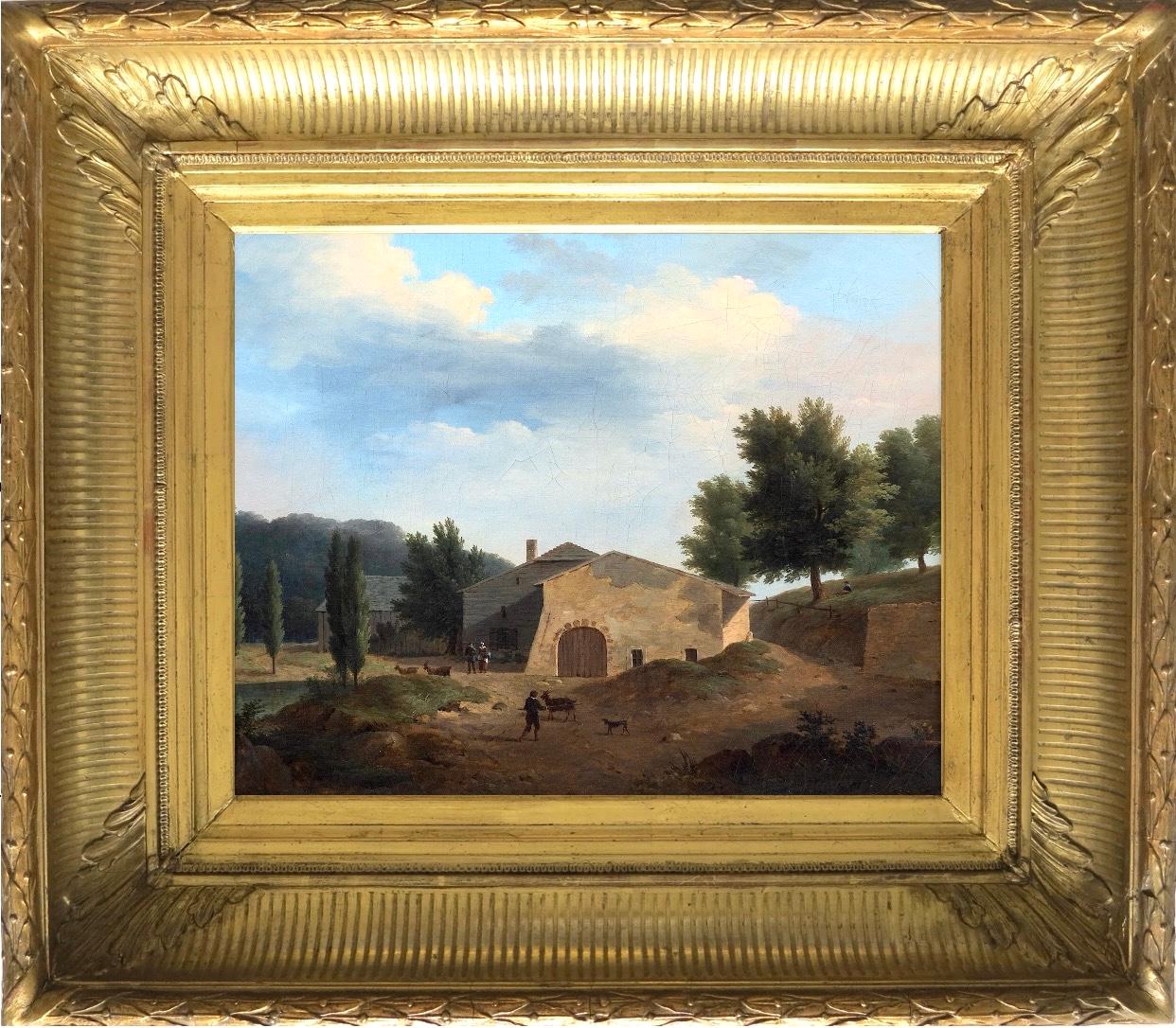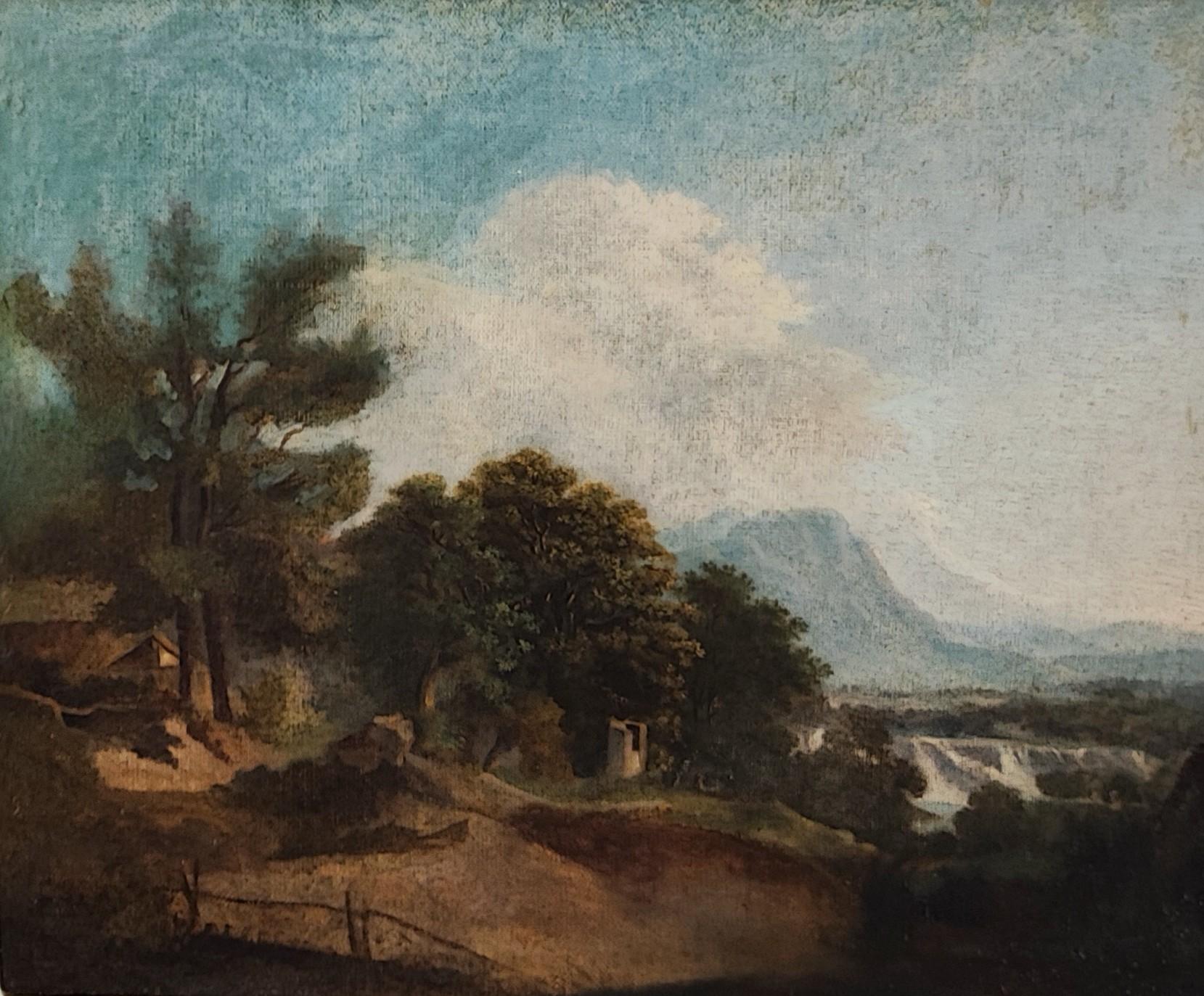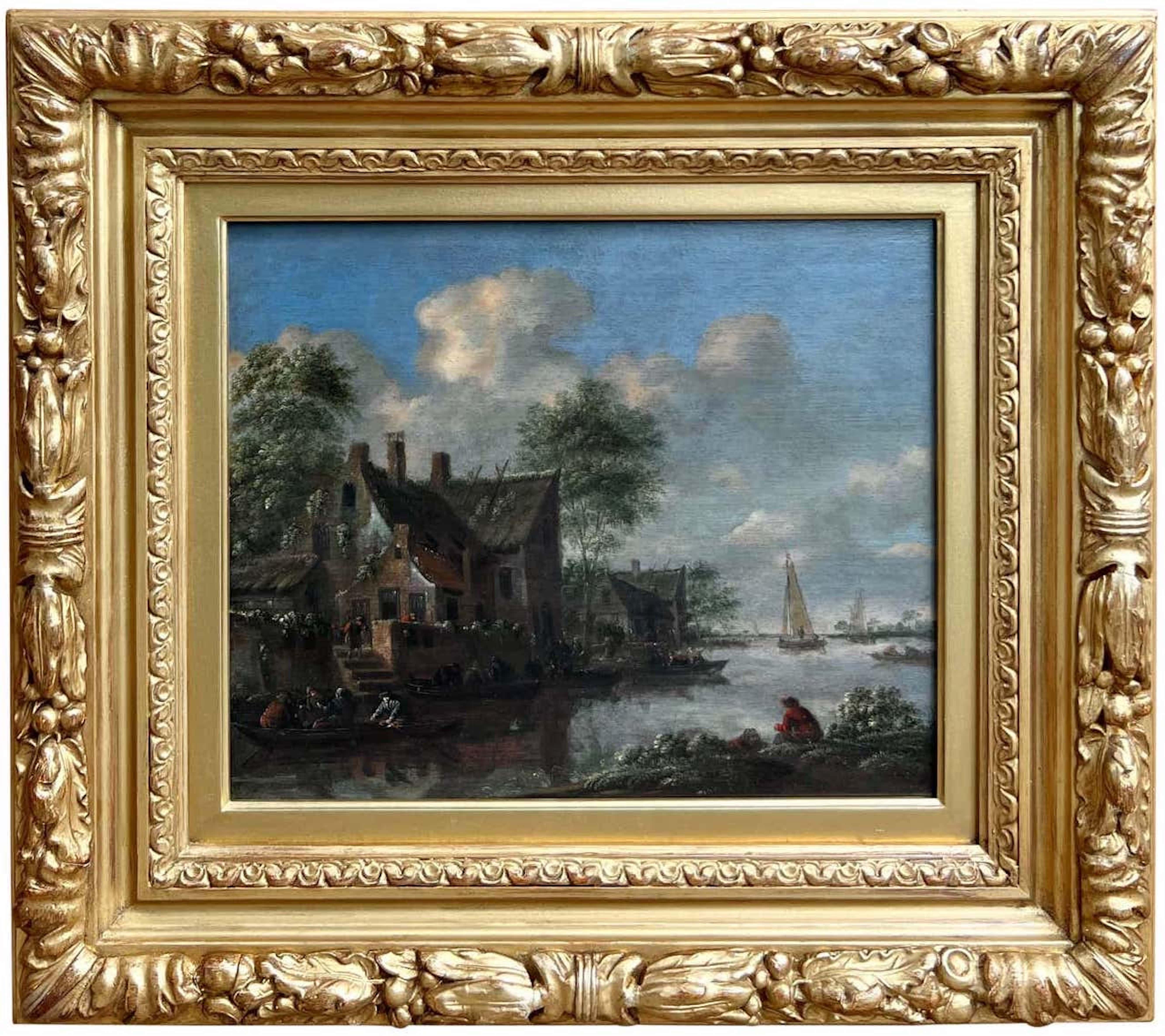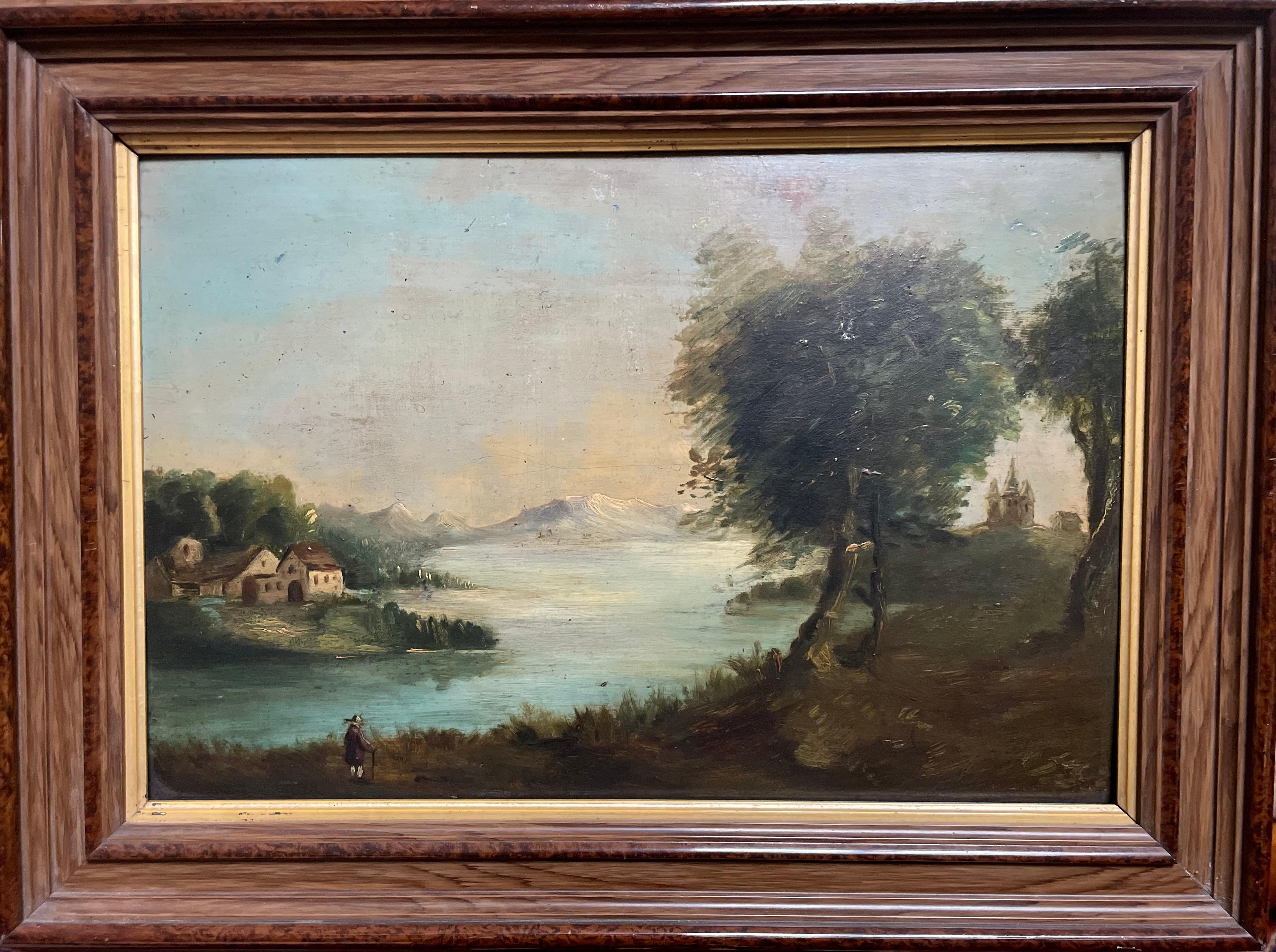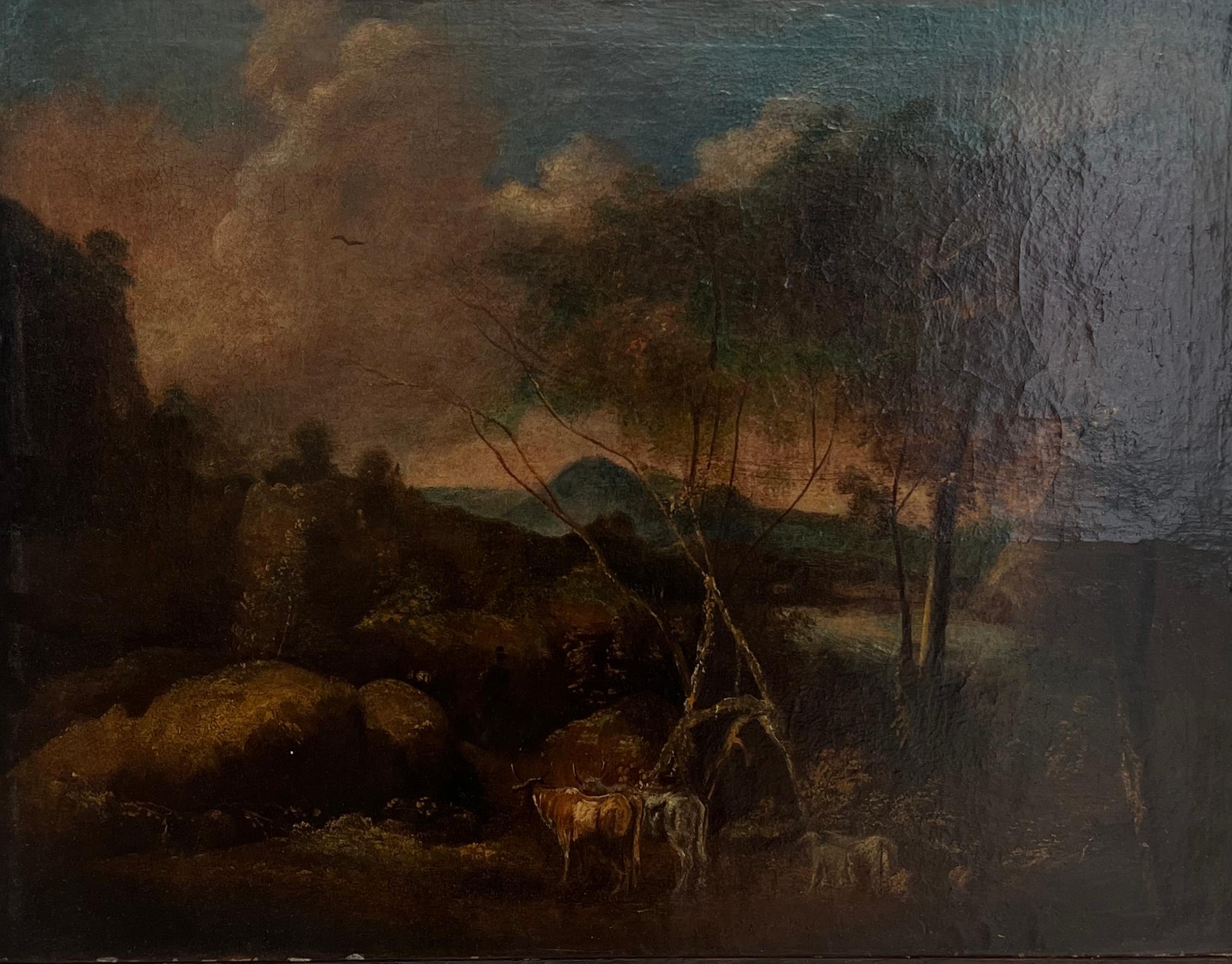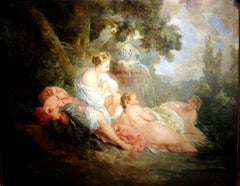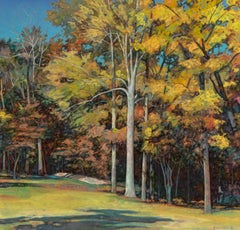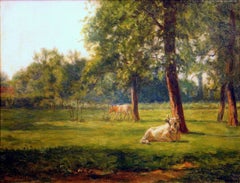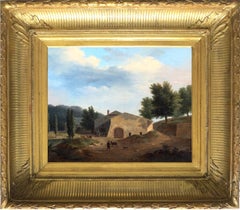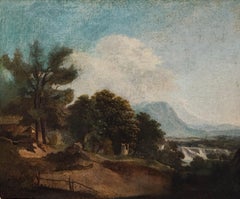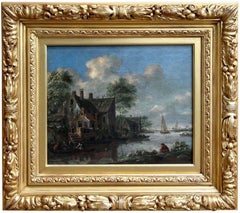Want more images or videos?
Request additional images or videos from the seller
1 of 11
UnknownA Ray of SunlightCirca 1800
Circa 1800
$19,800
£15,054.72
€17,343.25
CA$28,150.40
A$30,594.64
CHF 16,168.07
MX$370,129.08
NOK 201,361.79
SEK 190,198.74
DKK 129,487.02
About the Item
Ruisdael is regarded as the principal figure among Dutch landscape painters of the second half of the 17th century. His naturalistic compositions and style representing massive forms and his color range constituted a new direction towards a stricter sense of unity and simplification in landscape painting. The paint is broadly applied over wide areas, the gradations of color flowing into one another. Man is seemingly insignificant in comparison to the grandeur of nature. This work was painted in homage by a follower of Ruisdael during the first half of the 19th century while Ruisdael’s work was enjoying great popularity during the Romantic Age. The original hangs in the Louvre, and was acquired by Louis XVI in 1784.
- Creation Year:Circa 1800
- Dimensions:Height: 32 in (81.28 cm)Width: 39 in (99.06 cm)
- Medium:
- Movement & Style:
- Period:
- Condition:
- Gallery Location:Atlanta, GA
- Reference Number:1stDibs: LU1552397642
About the Seller
5.0
Vetted Professional Seller
Every seller passes strict standards for authenticity and reliability
Established in 2003
1stDibs seller since 2015
135 sales on 1stDibs
Typical response time: 8 hours
- ShippingRetrieving quote...Shipping from: Atlanta, GA
- Return Policy
Authenticity Guarantee
In the unlikely event there’s an issue with an item’s authenticity, contact us within 1 year for a full refund. DetailsMoney-Back Guarantee
If your item is not as described, is damaged in transit, or does not arrive, contact us within 7 days for a full refund. Details24-Hour Cancellation
You have a 24-hour grace period in which to reconsider your purchase, with no questions asked.Vetted Professional Sellers
Our world-class sellers must adhere to strict standards for service and quality, maintaining the integrity of our listings.Price-Match Guarantee
If you find that a seller listed the same item for a lower price elsewhere, we’ll match it.Trusted Global Delivery
Our best-in-class carrier network provides specialized shipping options worldwide, including custom delivery.More From This Seller
View AllMountain Landscape with Animals and Figures
Located in Atlanta, GA
A student of Regnault and of Bertin, Jean-Charles Joseph Rémond exhibited at the Salon from 1814 to 1848. He was awarded his first grand prize in 1821 for "L'enlevement de Proserpi...
Category
19th Century Academic Landscape Paintings
Materials
Canvas, Oil
François Boucher’s “The Four Seasons: Summer” at The Frick Collection - Rococo
Located in Atlanta, GA
Originally painted for Louis XV's mistress Madame de Pompadour, this sensuous work of voluptuous bathing nudes is a copy of Boucher's "The Four Seasons...
Category
19th Century Rococo Figurative Paintings
Materials
Oil, Canvas
Trees
By Edward Kellogg
Located in Atlanta, GA
"Trees" is a large oil on canvas featuring vibrant hues of bright yellow, green, blue, orange and red.
Born in 1944, Kellogg developed his early artistic interests studying in the c...
Category
1990s Contemporary Landscape Paintings
Materials
Canvas, Oil
$5,800
Pasture with Cows
By Rémy Cogghe
Located in Atlanta, GA
Born in Mouscron in the Belgian province of Hainaut, Cogghe attended the Academy of Roubaix where he studied under Constantin Mils. In 1876, Cogghe was admitted to the École Nation...
Category
Early 1900s Academic Landscape Paintings
Materials
Canvas, Oil
Still Life with Flowers in a Vase
Located in Atlanta, GA
Painted in the style of the 17th century Dutch painter Alexander Andrienssen, this painting is of a glass vase on a wood surface filled with flowers. The artist's careful attention ...
Category
18th Century and Earlier Old Masters Still-life Paintings
Materials
Oil, Wood Panel
Jesus and Saint John the Baptist
Located in Atlanta, GA
Similar in style to Guido Reni's late masterpiece "The Baptism of Christ," circa 1623, this painting by a follower of Guido Reni captures Reni's unique balance of strictly discipline...
Category
18th Century and Earlier Baroque Figurative Paintings
Materials
Canvas, Oil
You May Also Like
Neoclassical Landscape
By Jean-Victor Bertin
Located in Paris, IDF
Circle of Jean Victor Bertin (1767-1842)
Neoclassical Landscape
Oil on canvas
Not signed
32.5 x 40.5 cm without frame
56 x 64 cm with frame
This rural scene depicts an idealized a...
Category
Early 19th Century French School Landscape Paintings
Materials
Oil
Idyllic Landscape
Located in Douglas, Isle of Man
In the manner of Jean-Francoise Milet, 1814-1875, was a French artist, and one of the founders of the Barbizon School of painters. Milet influenced a great many painters throughout ...
Category
Late 20th Century Landscape Paintings
Materials
Canvas, Oil
Landscape at the waterfall
Located in Genève, GE
Work on canvas
Category
Early 19th Century Landscape Paintings
Materials
Oil
Village by the Lake
Located in Wiscasett, ME
Old master painting featuring a busy port city in the 17th century. Most likely Dutch and very close in style to the work of Thomas Heeremans. This is...
Category
17th Century Old Masters Landscape Paintings
Materials
Oil
"Landscape Painting"
Located in Edinburgh, GB
19th-Century Landscape Painting – Pastoral River Scene
Artist: Unidentified
Medium: Oil on Board
Dimensions: Framed: 35 x 47 cm Artwork: 25 x 38 cm
Style: Romanticism / Pastoral Lan...
Category
19th Century Romantic Landscape Paintings
Materials
Oil, Board
Pastoral scene
Located in Genève, GE
Work on canvas
Category
Mid-18th Century Italian School Landscape Paintings
Materials
Oil
$2,375
More Ways To Browse
Naval Battles Oil Painting
New Hope Oil Canvas
New York Wpa Painting
Oil Architecture Italian
Oil Paintings With Mill
Painting By Bush
Painting Oxen
Paintings Of Monterey
Paintings Victorian London
Paris Market Painting
Paul Gerard
Philadelphia Mid Century Art
Pyramid Oil Painting
Robert Cormier
Russian Realist Painting
Sailboat At Sea
San Anselmo
San Francisco Seascape
